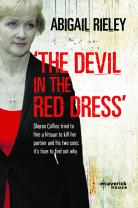When I was a child growing up in London I got a tremendous kick out of the fact that, in some people’s back gardens, you could dig down and find a layer of black soil. That soil, perhaps a little richer, a little grittier than the loam above, down where only the deepest roots reached, was the scorched earth that was left when Boudicca, the Queen of the Iceni, attacked the Romans at Londinium.
When you live in a city that has stood in the same place for hundreds and hundreds of years you live on the past. When you walk down the street you are walking on top of history. In a city like London, or here in Dublin, that history can reach back hundreds if not thousands of years. Most of the time we don’t pay attention. We go about our lives in blissful ignorance. But sometimes history breaks through. Just as gardeners can dig down and find those ancient London cinders, so those who crack the modern surface can touch a more visceral time.
Yesterday workmen digging ditches for drainage pipes under cobbled streets near Smithfield made the grim discovery of a pair of legs. The arms and the skull had been lost but what indications there were suggested that they were male legs. Work on the drainage pipe stopped and the gardai were called. It didn’t take long to work out that the shiny, heavily stained bones did not belong to a victim of recent violence and the investigation was passed to the archaeologists.
The area was fenced off and this morning a crowd of locals and tourists on their way to the Jameson Whiskey Distillery peered through the metal links at archaeologist Franc Myles hunkered down in front of a large gaping pipe, wielding a makeup brush. Once the legs had been removed for further examination another even grimmer discovery had been made. There in the clay, right in the path of the drainage pipe, was the skeleton of a child. Impossible to tell the sex, all that can be known is that he or she had only lived till three or four and had lived it’s short life in the 1600s.
The skeleton of a child is so much more interesting than a pair of grownup legs and a torso (when foul play isn’t suspected). Peering down into the shallow ditch were locals shocked at the thought that such small death had lain beneath their daily route for so long, children transfixed by a skeleton that somehow didn’t look remotely Halloween, tourists happily snapping away at a splendidly macabre addition to their tour. Occasionally glancing up from his work Franc threw up facts when he was asked, or to stop the steady stream of intermittently hysterical speculation. He didn’t mind working with the crowd, he said, the job had become so sanitised by health and safety regulations in recent years the public didn’t get the opportunity to see archaeology in the field much.
Lying half exposed, it’s little arms crossed demurely in front, the little skull cocked to the side in an accidental approximation of infant piety, the small skeleton was the centre of attention just as it would have been when it was laid to rest in the 17th Century. It’s easy to imagine the pudgy hands grasping at a mothers hair in life, the grieving parents standing over the grave, which would have stood then within the graveyard. The church, St Michan’s, is still there – it’s home to a celebrated crypt with a lanky crusader and fallen revolutionaries. The graveyard though has shrunk over the years and forgotten bones it seems lie beneath the streets in the area.
It would have been so different in those days. I’ve cut down May Lane so many times on my way to the Four Courts but they weren’t even built when the child was buried. Ireland’s first Inn of Court was in an old Dominican priory near the spot where the Four Courts now stand back then. In the 1600s the Inn’s gardens stood where the Four Courts are “with knottes and borders of sweet herbs, pot herbs, flowers, roses and fruit.” The scents from that garden would have been carried on a summer breeze to the graveyard so close behind, where the child’s grave lay.
These days, where the churchyard would once have stretched, the large glass King’s Inns building lies empty. I’ve only ever seen someone in it once, when hurrying home to write up the day’s proceedings, I saw white suited swordsman fencing for a film crew in the cavernous ground floor. The barriers that now surround the child’s resting place usually ring the empty building – god forbid rubbish should gather in it’s white elephant corners.
In another four hundred years what will be left of our world? What relics will we leave under the roads of our descendents? The child will be gathered up and taken away for further study. We’ll never know whether boy or girl, what was its name, perhaps even why it died so young to end up under a busy side road. It’s sad but it’s what it means to live in a city as ancient as this one. We walk on what came before, we live on top of the lives of those who lived here before. The life of a city is vertical. You rarely get the chance to see so except on days like today. Sometimes history really feels all around us.



